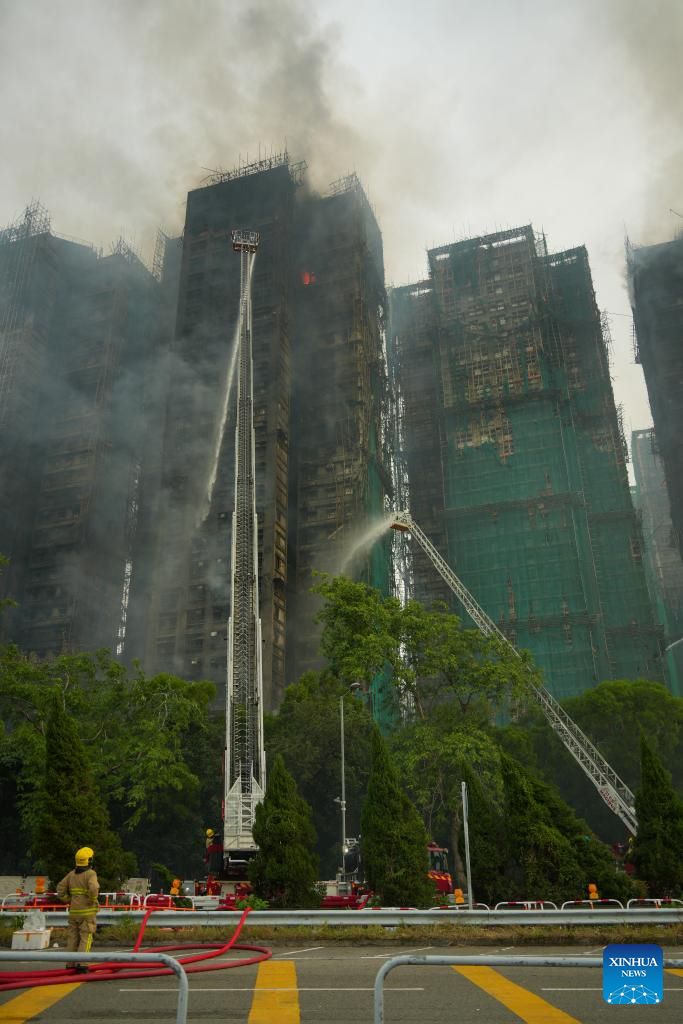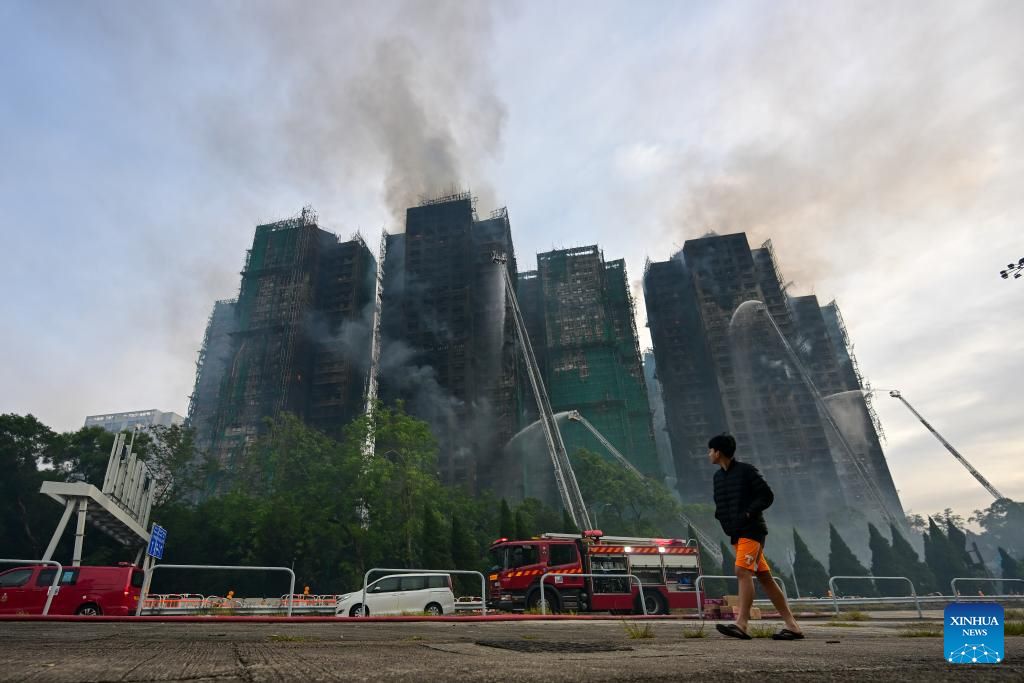As of the morning of November 27, at least 44 people have been killed and 279 people are missing after a terrible fire that engulfed a high-rise apartment complex in Tai Po district, Hong Kong (China).
The fire broke out at 2:51 p.m. on November 27, quickly spreading through many 31,500-storey apartment buildings under renovation. The entire surface of the buildings is covered with bamboo scaffolding and green plastic nets - materials that are familiar on construction sites in Hong Kong (China).
Hong Kong (China) police have arrested two leaders of a construction company and a consulting engineer to investigate the murder charge. The cause of the fire has not yet been determined, but the fire spread so quickly that the public could question: Why does a modern city like Hong Kong (China) still use bamboo scaffolding?

Bamboo is an open, light-trunk tree, easy to transport and has a high load-bearing rate compared to its weight. When tied, reinforced and anchored properly, bamboo scaffolding is capable of withstanding wind and work loads. Hong Kong (China) even has a set of regulations for the design and construction of bamboo scaffolding issued by the Department of Construction and the Department of Labor.
Not only Hong Kong (China), bamboo scaffolding is also popular in many regions in China, India, Southeast Asia and South America.
Three main reasons for bamboo scaffolding to " stand firm" in the modern era:
Quick and flexible: A team of skilled workers can pull the entire outside of the building very quickly, even in narrow streets where cranes cannot be put in.
Cheap and easy to find: Bamboo is much cheaper than metal scaffolding, and is available locally, helping contractors keep maintenance and painting costs low.
Tradition and long-standing technology: Hong Kong (China) has a certified bamboo scrapers training system. This profession has become a part of the city-building culture for hundreds of years.
Bamboo is also an environmentally friendly material, growing quickly and easy to process.
But the risks are not small
The tragedy in Tai Po clearly shows the biggest risk of fire.
Dried bamboo is flammable, while the plastic layer surrounding the scaffolding makes the fire spread faster in the vertical direction. Images of the scene show the fire rising along the scaffolding frame, then spreading to the entire outside of the building in a short time.
Therefore, experts call for tightening regulations: Only use non-fire-proof materials for works with occupants; use fire grids, bamboo for fire-proof treatment; create a space between scaffolding compartments so that the fire does not "jump" from one room to another.

Second risk comes from natural changes in bamboo materials: Durness varies depending on species, age, and moisture. The bandwidth can be loose, and storms can easily cause danger. Therefore, Hong Kong (China) has increased requirements for the size and dryness of bamboo, forced anchorage with steel racks, tested anchor loads and increased the frequency of inspections in bad weather.
The trend of switching to metal scaffolding
In March 2025, the Hong Kong Development Administration (China) required at least 50% of new construction projects under the government to use metal scaffolding. In documents sent to the Legislative Council in June and July, the government emphasized that the conversion process will be implemented gradually at the appropriate level for each project.
Private people are still allowed to use bamboo scaffolding according to current regulations, but for public works, metals are becoming the standard, reflecting the need to increase safety and minimize the risk of fire.











